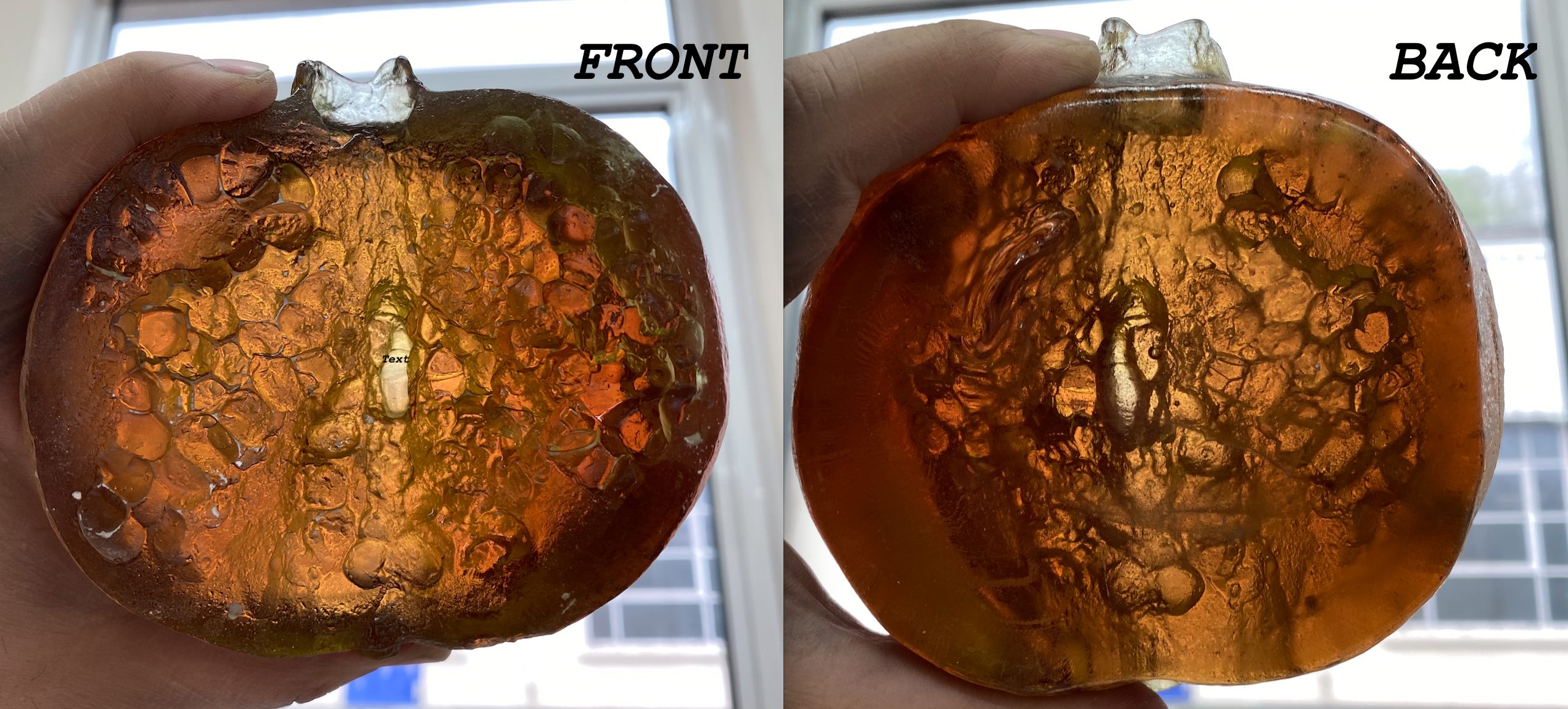
Because I haven’t been posting anything on my socials since late 2020, not many people know I have been exploring the medium of glass for some time now..
Pomegranates have been one of the subjects of exploration as they are a fruit which I believe deeply resonates with the politics of the region in which we (myself and the pomegranate) are both from – West Asia.
Although beautiful and with so much potential, they have also been deeply intertwined with colonial politics and their once poetically dominant meanings in herstory, value, nutrition, mythology and ancient tales of fertility have been hijacked by misplaced ideas of warfare and destruction.
“What is less apparent is the fruit’s relation to modern warfare. Stemming from the 12th century Anglo-Norman pome gernate, our English pomegranate became pume grenate in Old French. This pume grenate eventually became pomme grenade in Modern French. Pomme grenade, of course, looks exactly like grenade or hand grenade, and this is no coincidence.” -ALTA
This short post online, written some time ago now, offers a clear and straight forward definition of the complexities of this fruit.
“So why name the weapon after the fruit? If you were to crack open a hand grenade today you would see tiny balls of shrapnel inside the explosive’s casing. The shrapnel mimics the pomegranate’s seeds—each seed the potential for a new tree, each shrapnel the potential for a hit body. Shaped like a pomegranate and designed like a pomegranate, it’s certainly ironic that a weapon used to kill several people at once is named after the ancient fruit of fertility.’
It makes sense why so many Asian & African artists have used the symbol of a pomegranate to respond to white peoples wars in our homelands and countries. This language and extraction imposed upon an indigenous fruit of West Asian land is just another example of the consistent existence we must live that straddles the line of life and death, danger and beauty, the possible (fertility=future) and impossible (war=erasure).
There is so much to say about this subject.
To bring it back to the work in progress I have shared above, to me the back side of this glass pomegranate looks like the insides of a human body. Almost like lungs attached to a skeleton, I am in awe by the simplicity and clarity light can offer. Light is such a fascinating natural element.
I’m not quite sure what will come of this work I am exploring, but I know I’m working towards a language within my glass work which translates so effortlessly with my works in water and interest in the often complex and sometimes ephemeral experiences of the human condition.